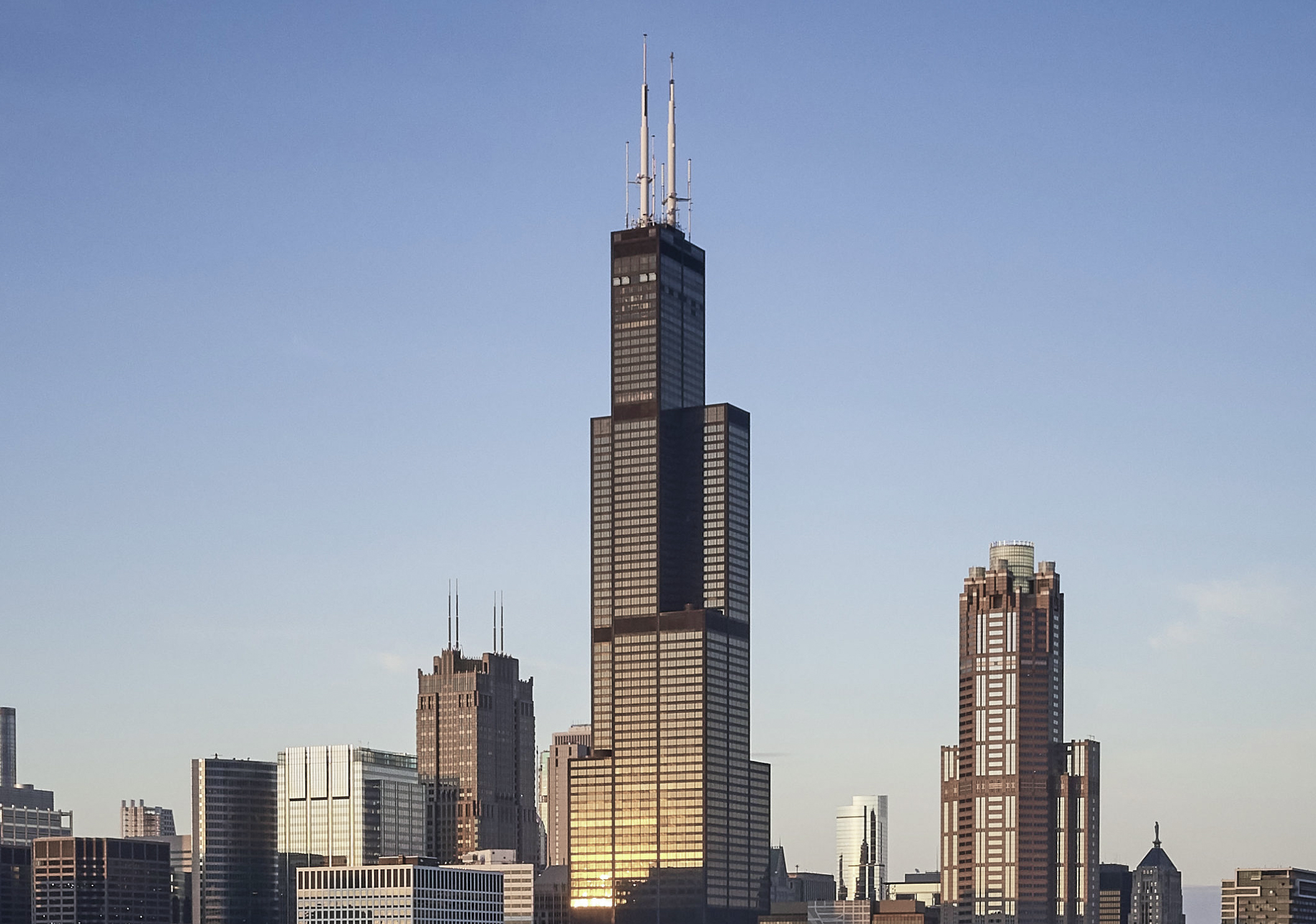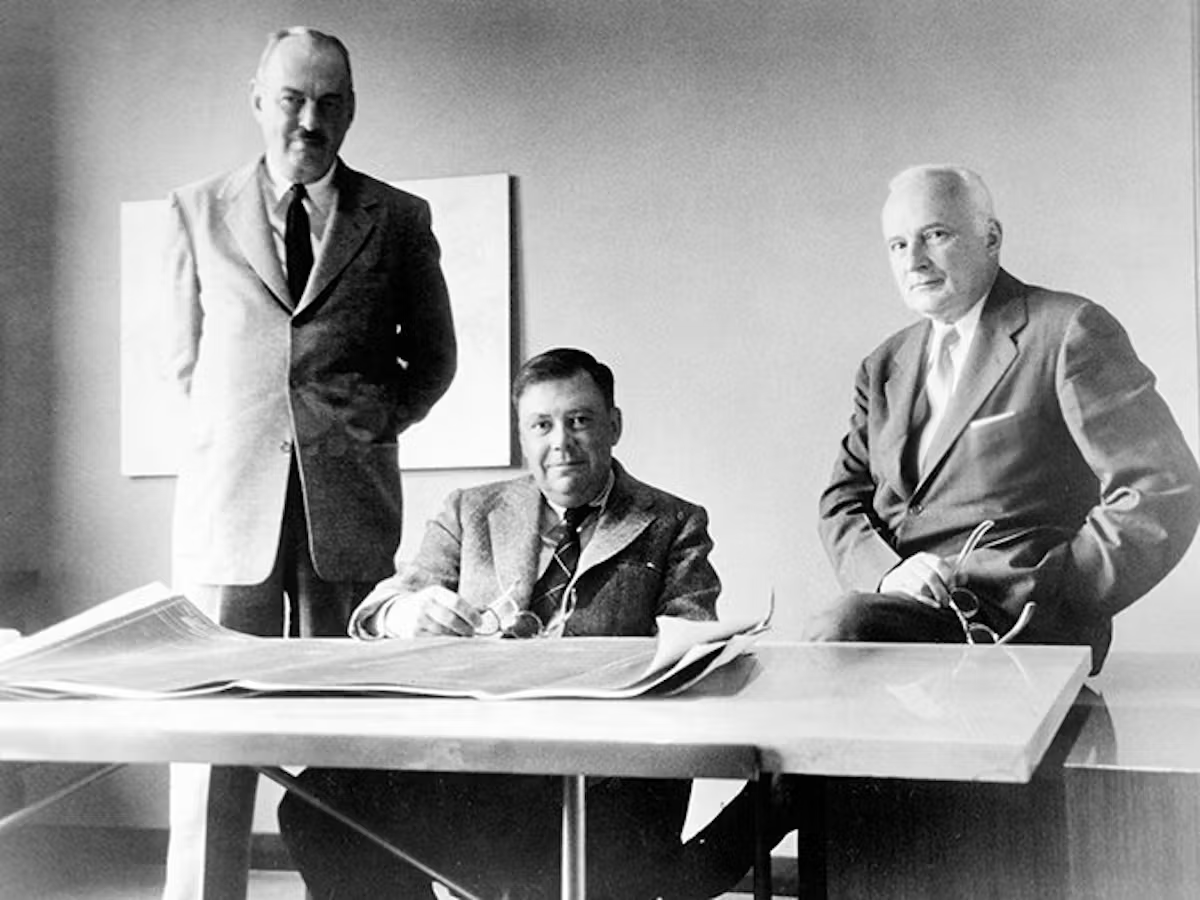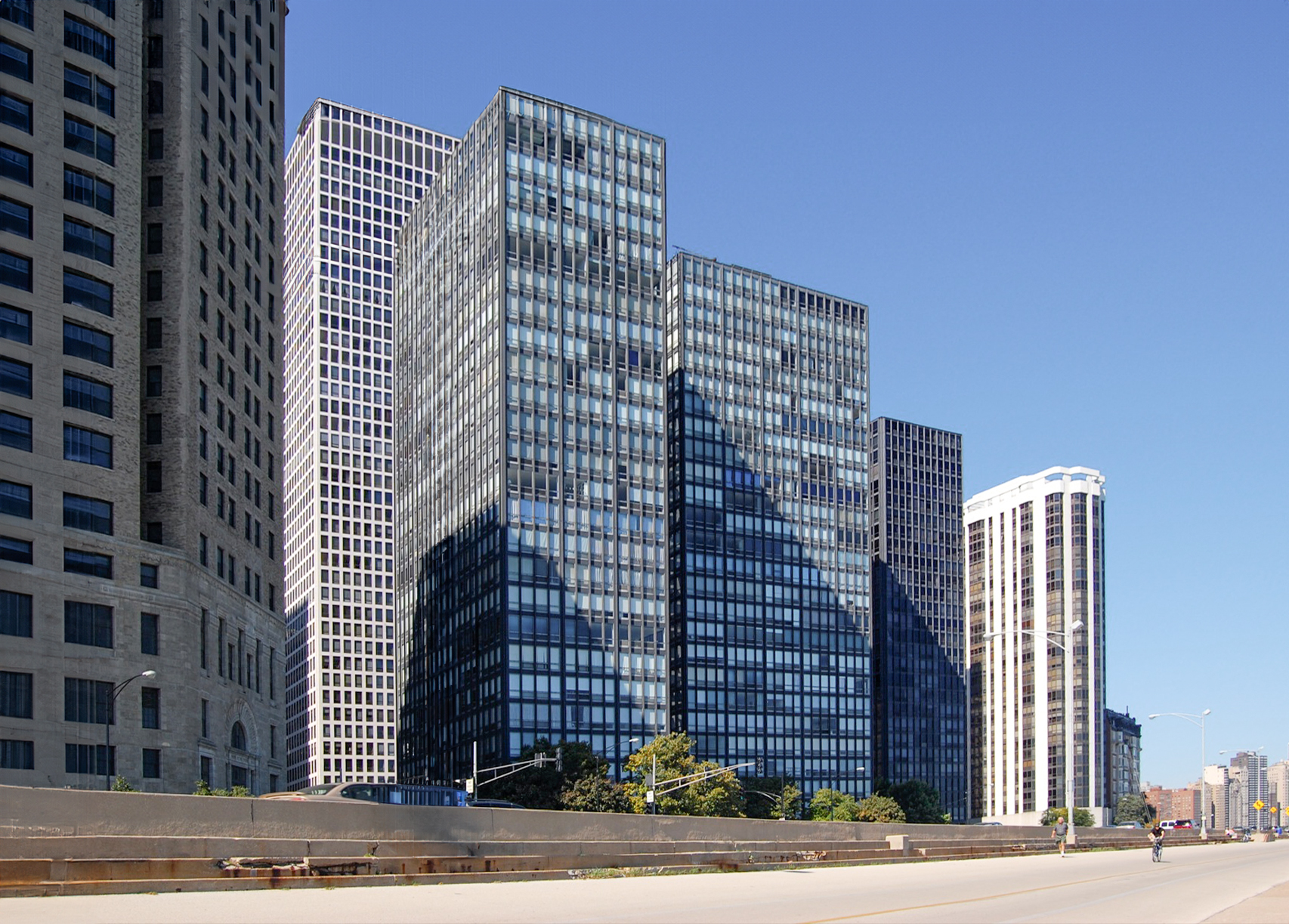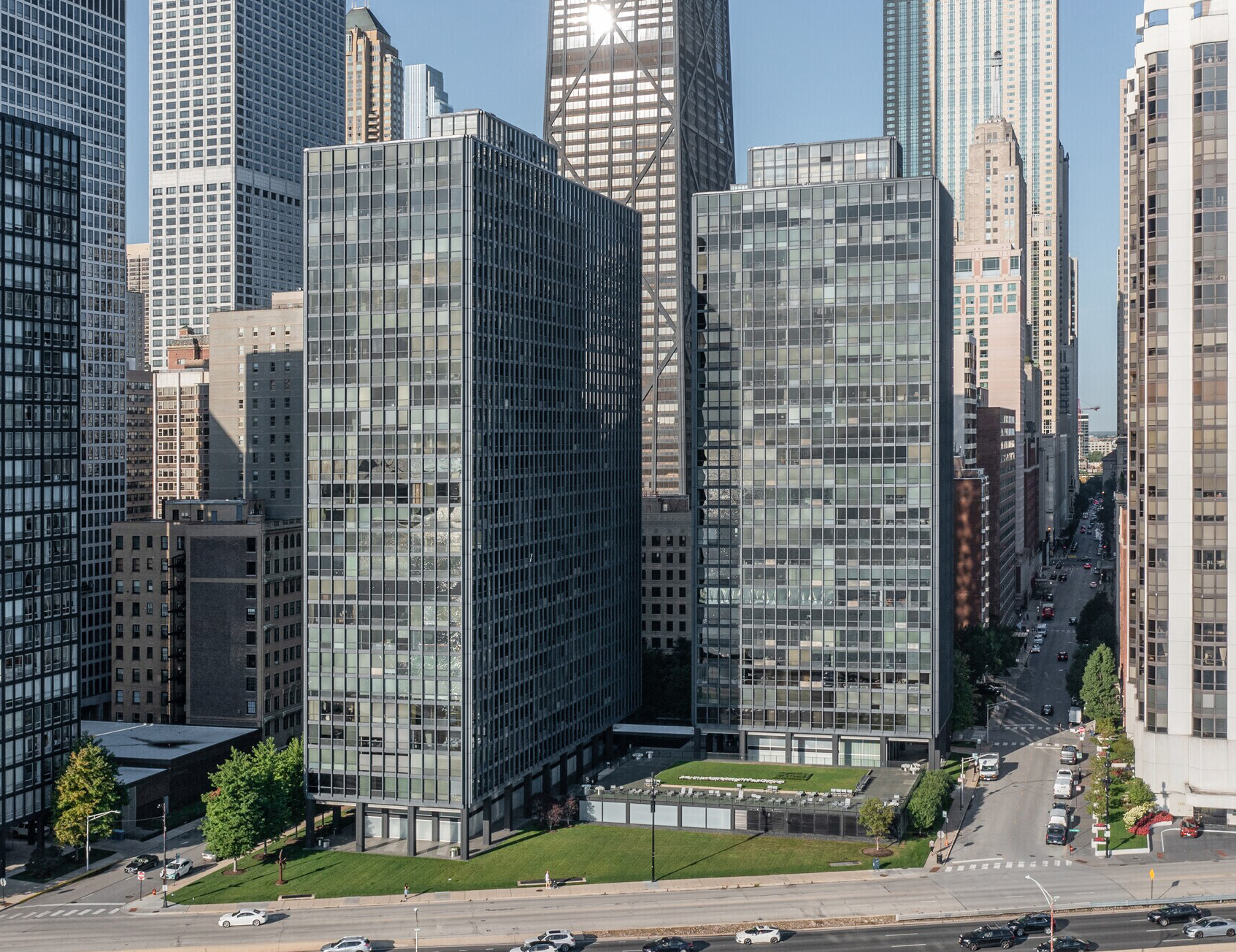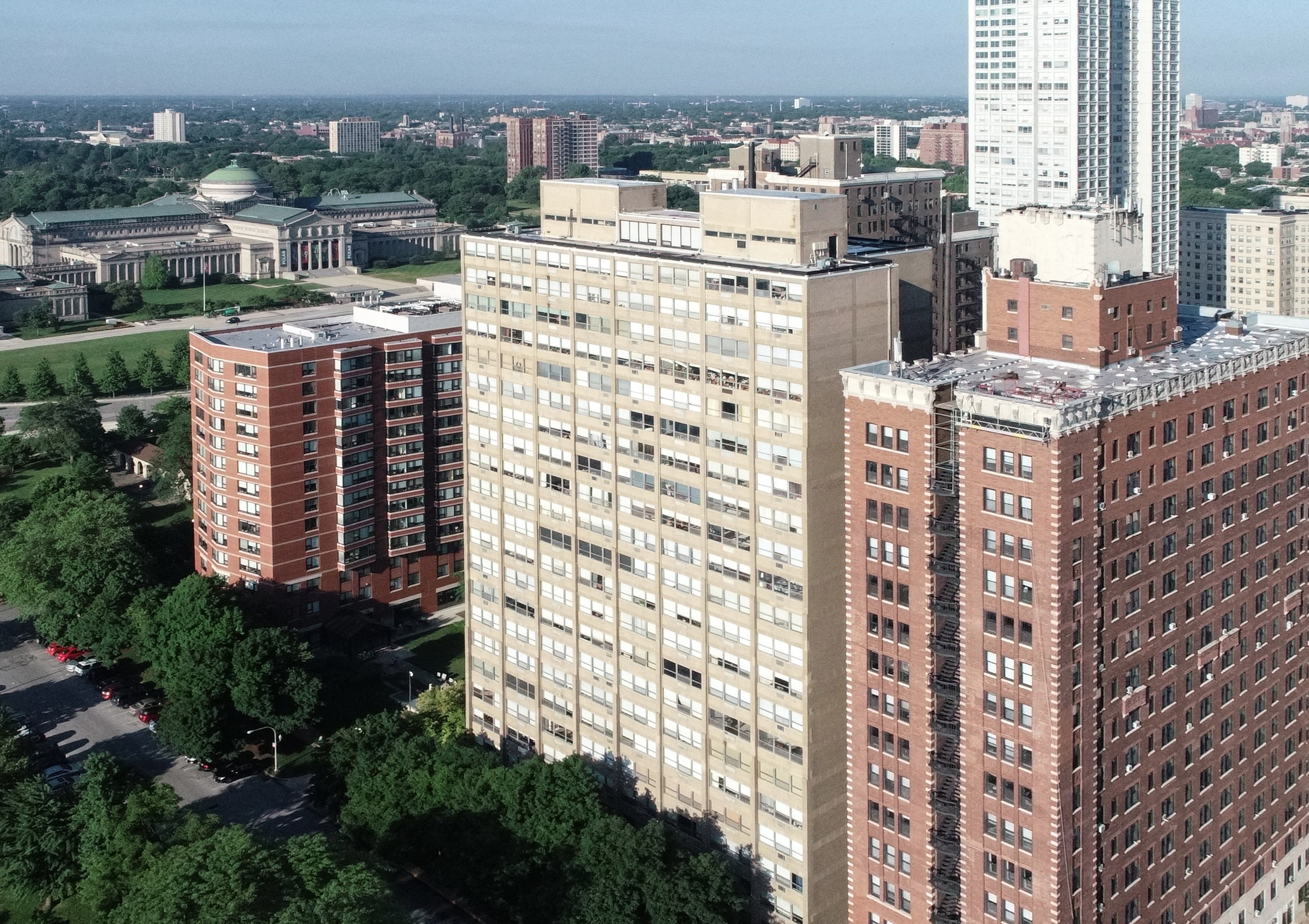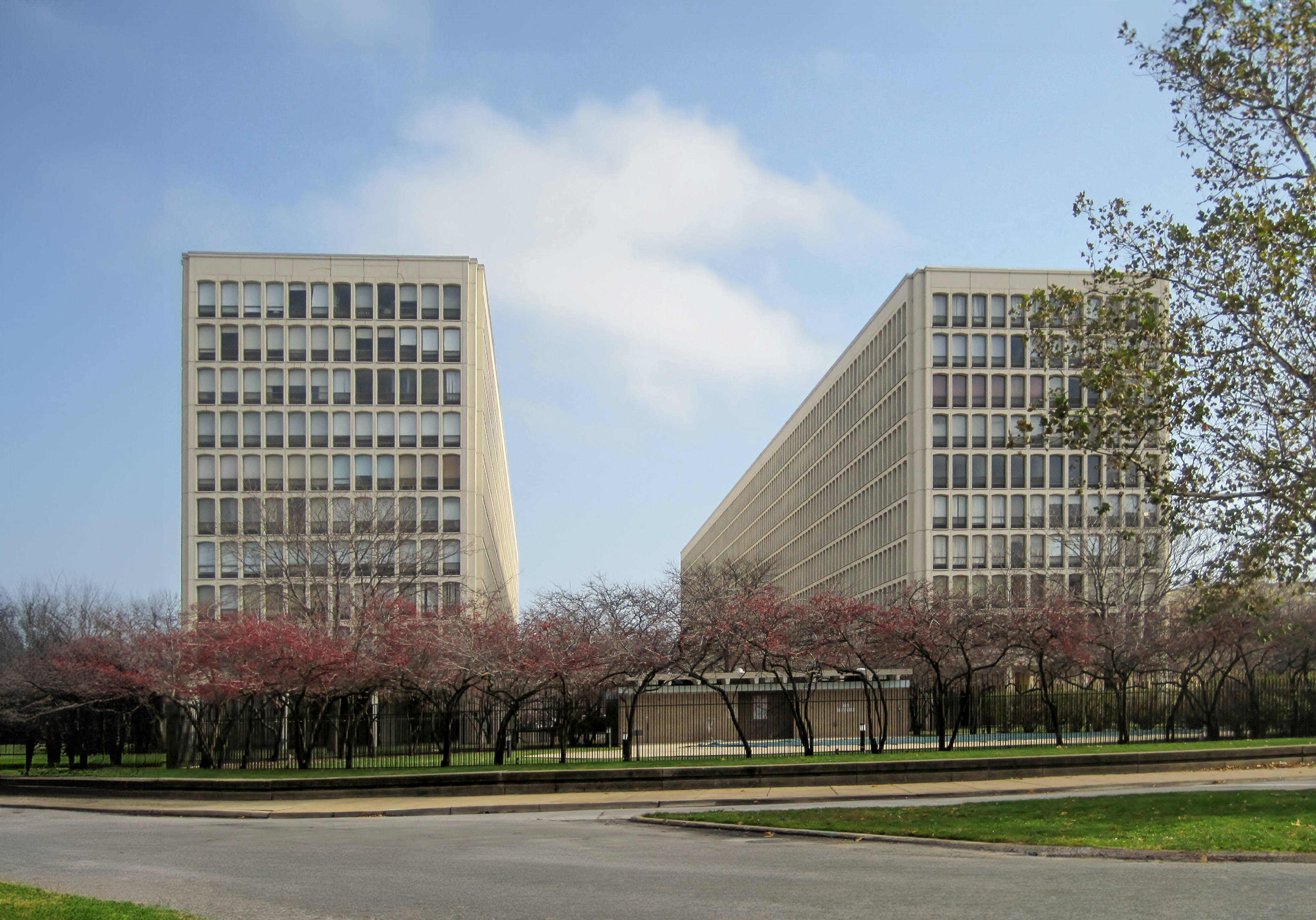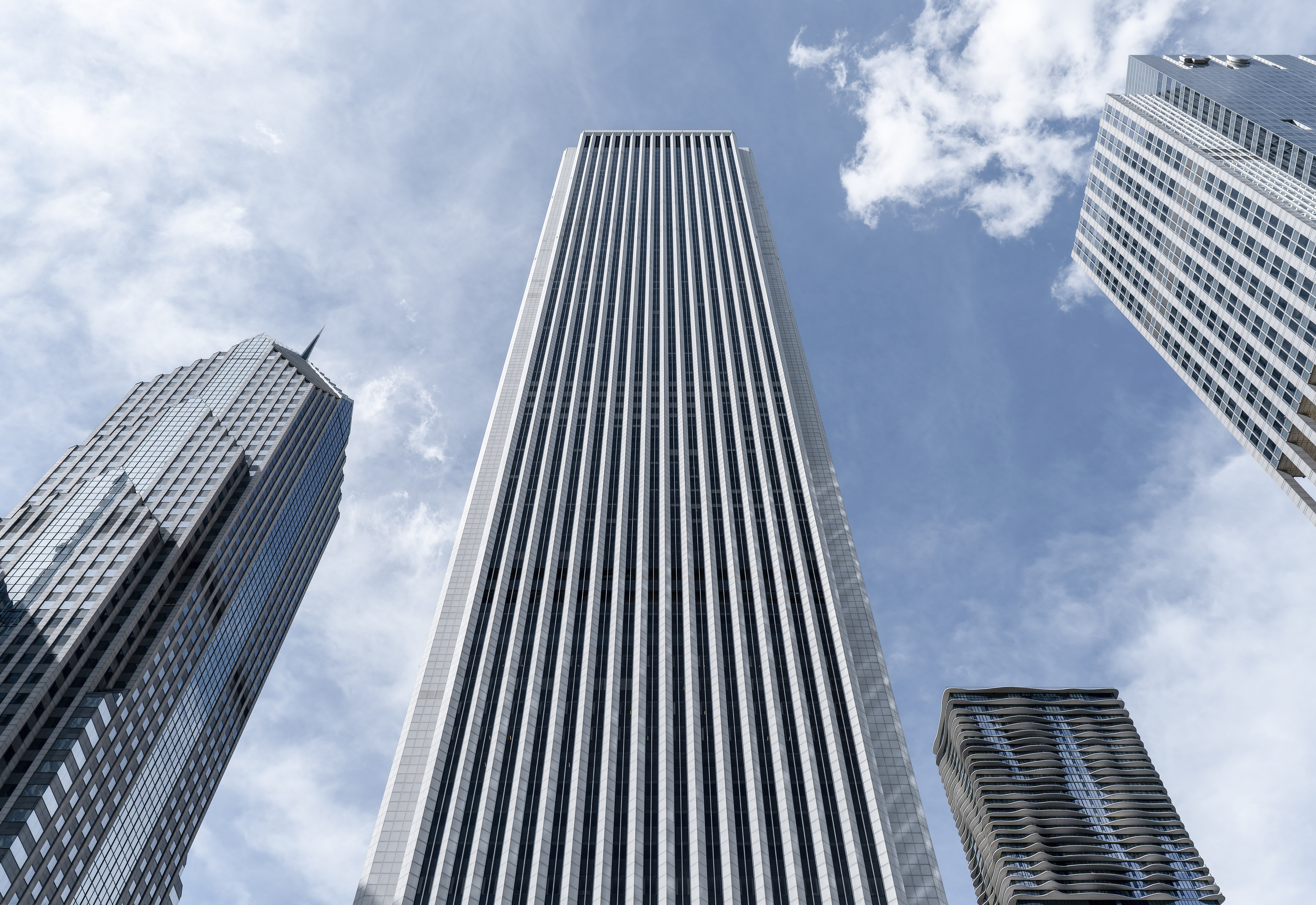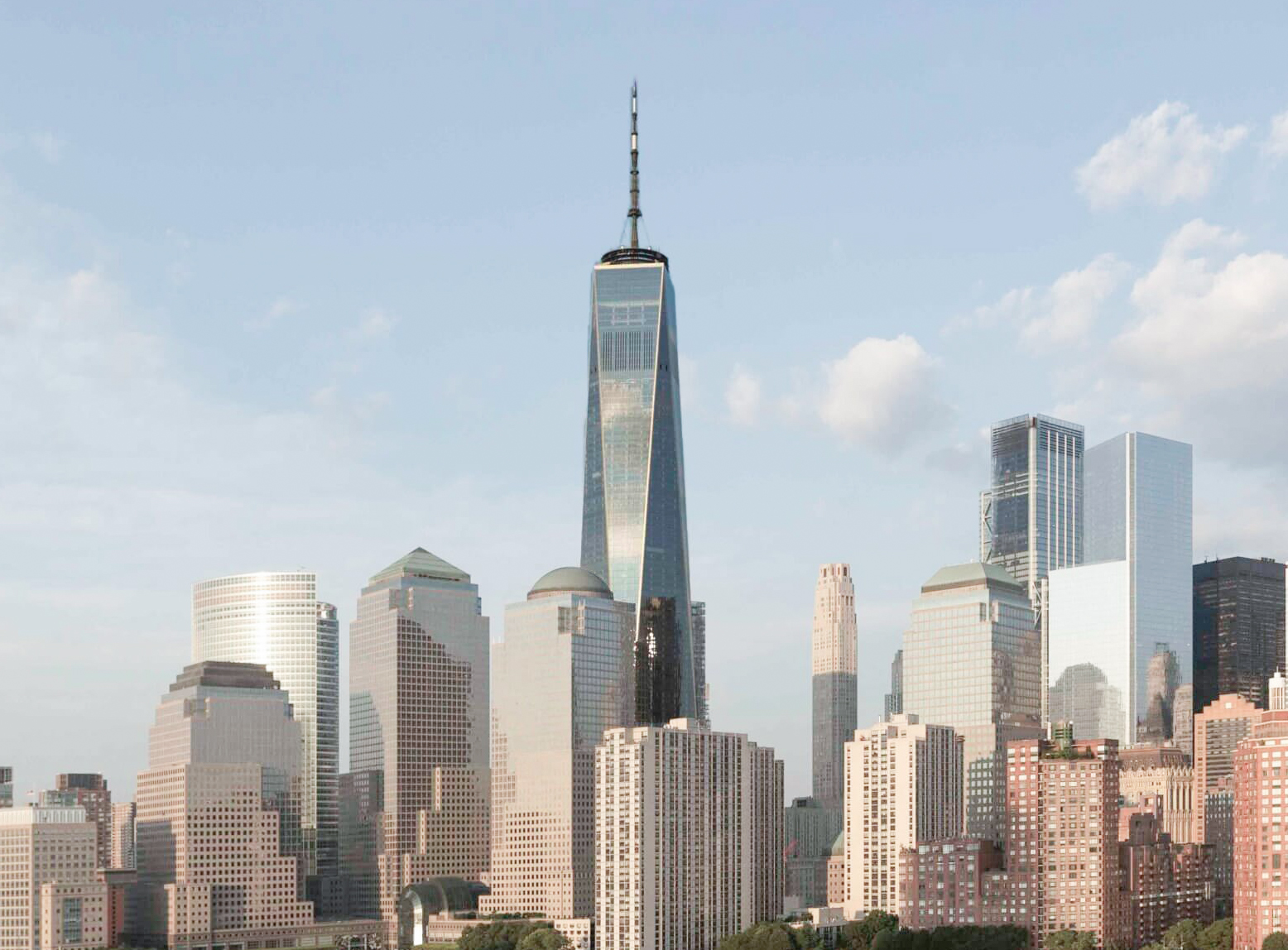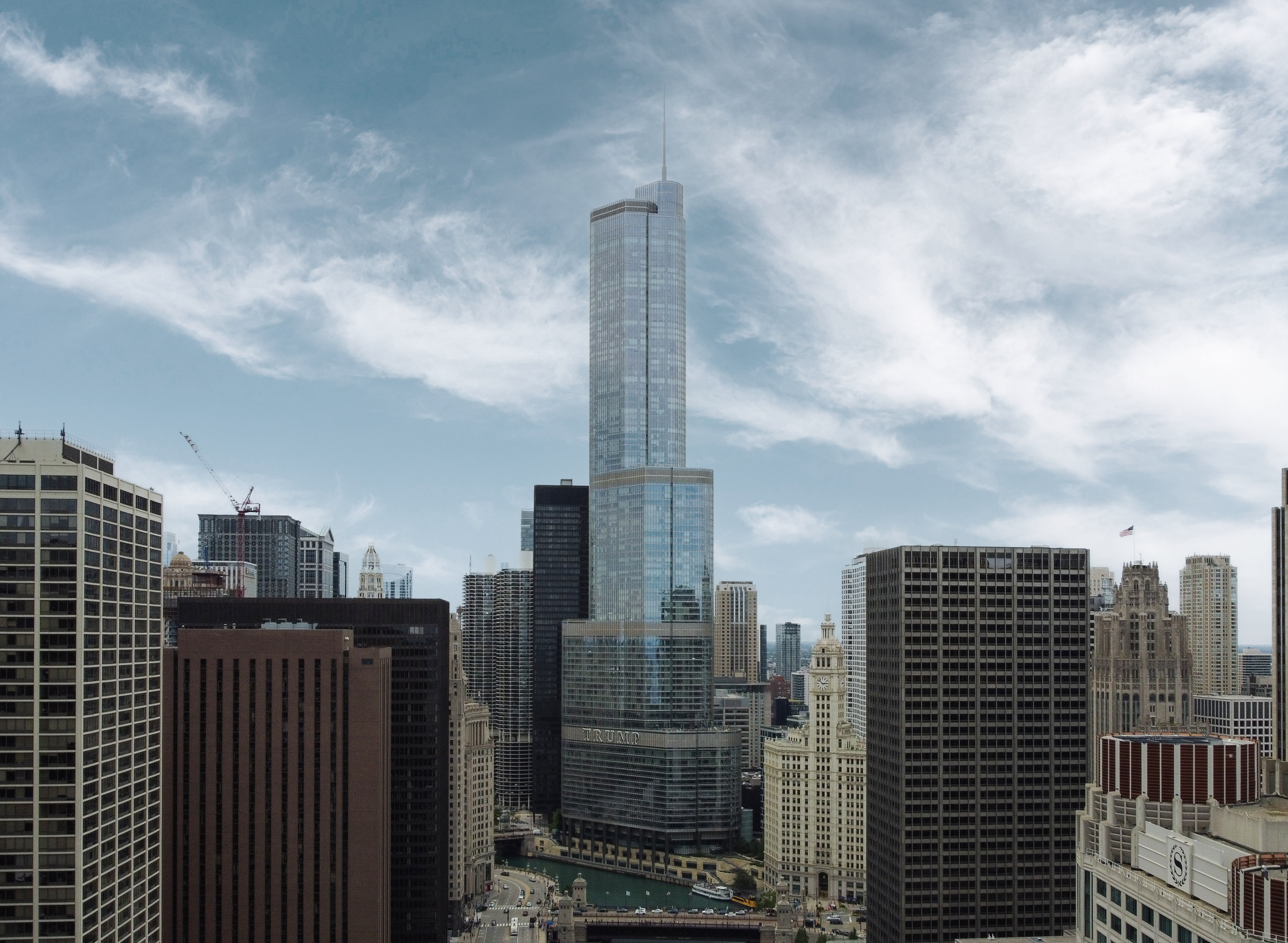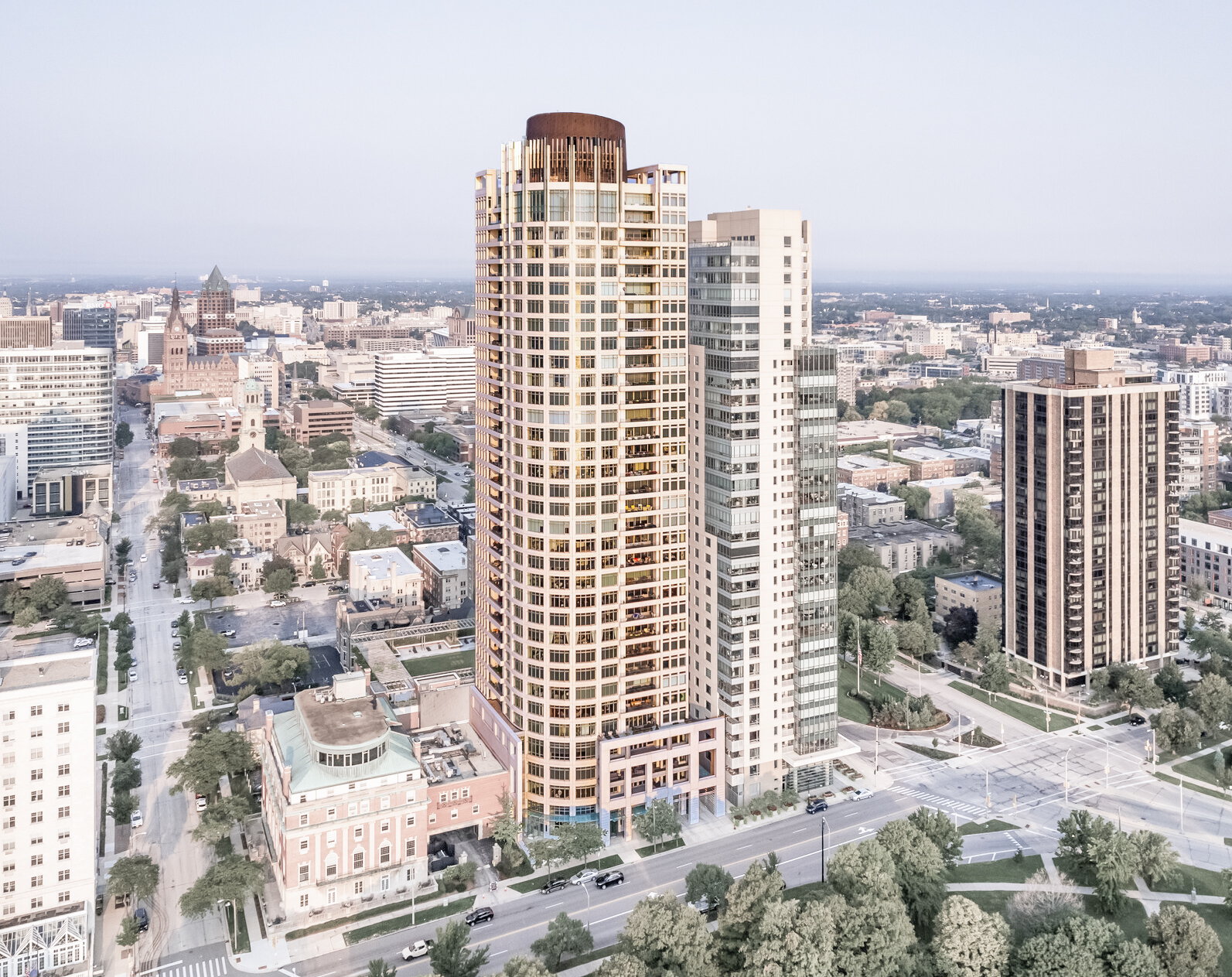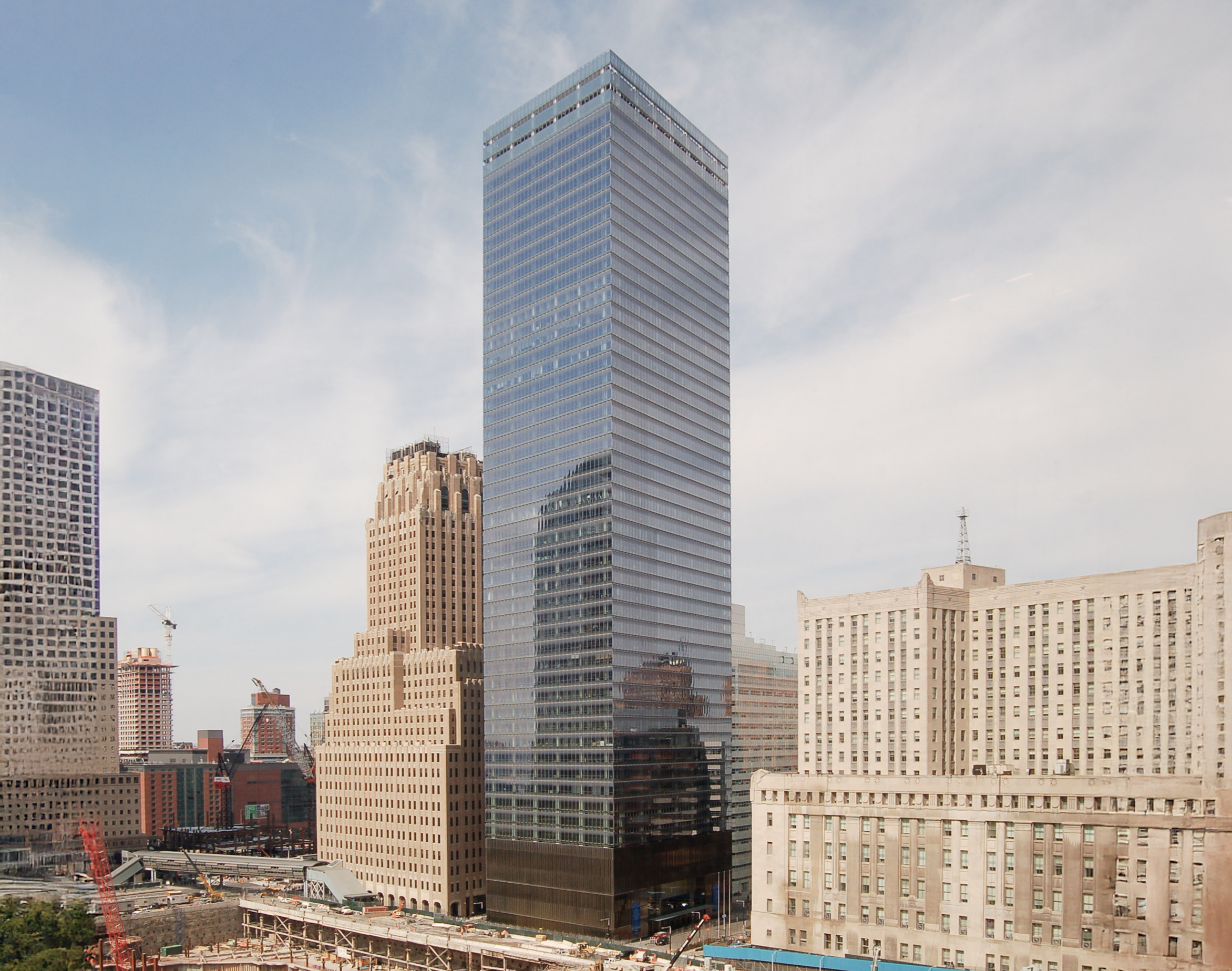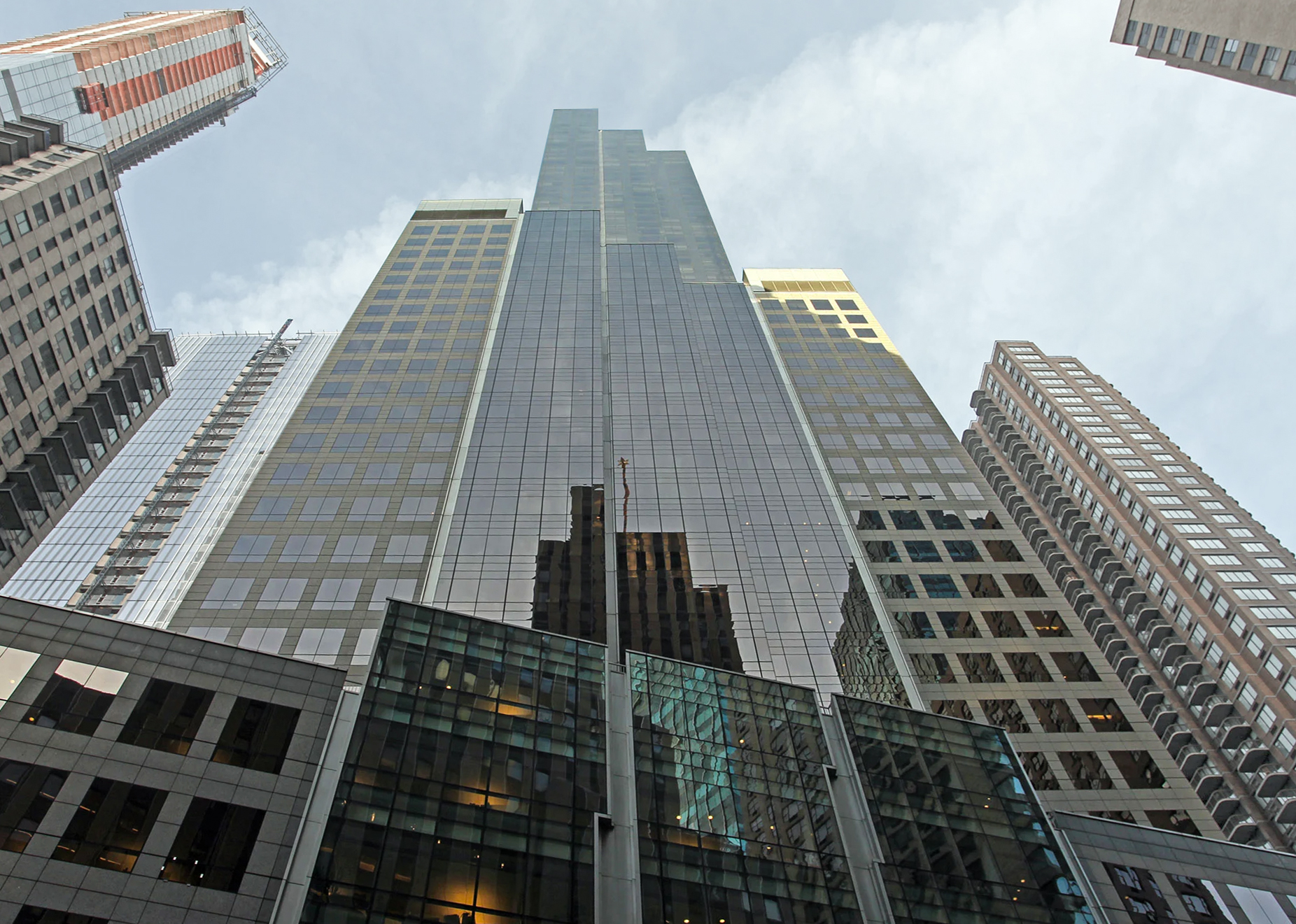The Willis Tower is an International Style skyscraper designed by Skidmore, Owings & Merrill, with Bruce Graham as lead architect, and built between 1970 and 1974, for a reported $175 million dollars, in Chicago, IL.
Willis Tower is not the only name you might know this building by though. It is common for companies to want to attach their names to iconic buildings when they move in, or for the general public to come up with nicknames, and this one is no exception. The building has changed names several times over the years, and is also known as:
- Sears Tower between 1974 and 2009.
- Willis Tower from 2009 until this day.
Its precise street address is 233 S. Wacker Drive, Chicago, IL. You can also find it on the map here.
Architect Bruce Graham and engineer Fazlur Khan used an innovative structural system to address wind loads on a building of this height. The structural steel frame was pre-assembled in sections and then bolted into place. The structure is made up of 9 square steel tubes, each 23 x 23 meters wide, interconnected to act as a single unit, with no columns between the core and the perimeter. Two of the tubes are 50 stories high, two are 66 stories, three are 90 stories, and two are 108 stories.
Some people say the building has 110 floors instead of 108. That is including the elevator shaft and its roof, which are not normally counted as floors.
When it was completed in 1974 it was the tallest building in the world, a title it held until either (and this depends on how building heights are measured, which was not standardized at the time) 1998, when the Petronas Towers in Kuala Lumpur were completed, or 2004, when the Taipei 101 was..
The building has been restored 3 times over the years to ensure its conservation and adaptation to the pass of time. The main restoration works happened in 1980, 2009 and 2019.
